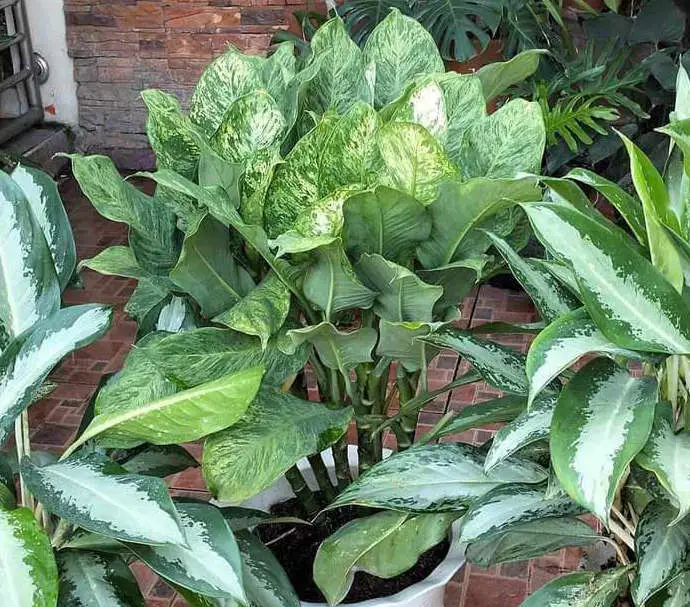Prayer plants are amazing little plants with a big story. They grow in almost any type of soil, they need only sun and water to survive, and they produce beautiful flowers that come in reds, oranges, yellows, purples, and whites!
It is no wonder that prayer-plants are one of the most popular houseplants around the world. So what do these tiny plants pray for? Find out why prayer-plants pray at night right here!
Why Do Prayer Plants Pray at Night?
While scientists are still unsure why prayer plants fold their leaves at night, there have been several theories. One theory suggests that the folding of leaves helps to protect the flowers from excessive evaporative water loss during long hours in darkness.
The plants do this by tucking moisture into any available crevice within their stems and veins while also pulling excess water away from more vulnerable areas like flower buds or newly developing tissue.
Since prayer plants thrive on sunlight, they typically spend their time during the day soaking up all the rays they can get! However, when night rolls around, these tiny gems change into a whole new being.
They fold their leaves toward each other so that together they look like one big flower bud – almost like someone is praying with them! This shape helps conserve moisture for long hours through the night while still capturing any available light from the moon or stars.
Though it may seem weird, this process is actually quite common among several species of plants. The reason for the prayer-like shape at night, however, is still a mystery to most botanists and scientists!
What Are Prayer Plants?
Prayer plants are members of the Maranta family, which includes over 60 species that grow as different types of herbs. These beautiful flowers are native to tropical regions in South America and Africa.
The most common prayer plant is Maranta leuconeura, but there are several other varieties, such as M. tricolor, M. arundinacea, and M. picta.
Prayer-plants grow best in an environment with lots of indirect sunlight where temperatures stay around 65 degrees Fahrenheit (18 C). They also prefer consistent moisture levels by placing them near a water source like a sink or shower!
They have beautiful emerald green shades along their midribs, which slowly change to moss green as they age. The geometrical patterns on them are in contrasting hues of the same color – either bright or dark greens, depending on where you look closely at it!
How Do Praying Plants Move to Pray?
When we think about plants, it is natural to wonder how they move at all. Without muscles and tendons, how do these organisms manage any sort of movement?
While plants lack muscles and tendons, they still have structures that help them move. The best name for this, however, would be nyctinastic movements, which are natural to plants and performed daily.
The maranta plant’s leaves move at night in order to protect it from potential predators. This motion is called Nyctinastic and follows a 24-hour clock, which makes it appear as though the leaf is praying.
How Do Nyctinastic Movements Occur?
Prayer plants typically fold their leaves toward each other during the night when they are in a state of darkness. This motion is called nyctinastic movement, which literally means “sleep movements.” In prayer-plants, these movements help to conserve moisture for long hours through the night while still capturing any available light from moon or stars.
The term ‘nyctinasty’ was first used by Charles Darwin who observed this behavior among several species of flowers and shrubs that grow naturally near his home in England.
His early observations were published as a book titled Movements and Habits of Climbing Plants (1865) where he theorized about why certain climbing vines moved at night rather than growing towards sunlight as most plants do!
Where is the Best Place to Put a Praying Plant??
Praying plants come with a lot of beauty and care requirements to be kept healthy and thriving in your home. One important thing to know is where you should put this plant!
The best place for the prayer plant would be somewhere that gets indirect sunlight during the daytime, such as near a window sill or inside an office space. They also thrive at room temperature – about 65 degrees Fahrenheit (18 C), which makes them perfect indoor air-plants!
How Can Praying Plants Make Your Home Look More Beautiful?
Having praying plants around your house adds some natural elegance to any environment because of its unique colors and patterns. These plants are also simple to maintain and care for, which makes it a great choice if you’re looking to add some green into your home!
Conclusion
In conclusion, prayer-plants are a beautiful and interesting part of nature that is the center of much discussion among botanists for hundreds of years.
While scientists may not be 100% sure why these plants pray at night, there is no question about their ability to survive in almost any type of soil while still producing some truly stunning flowers!
And because prayer-plants typically need only sun and water to thrive, they make an ideal houseplant perfect for those looking to add a little more beauty into their lives without doing too much work.
What do you think? Do you know why prayer-plants fold their leaves at night time? Leave me your thoughts down below or even share this article with someone who might find it useful.
Tim is an avid gardener from the UK. He was the founder of PlantCarer.com from 2021 to Sep 2023. He sold PlantCarer.com to Aaron. He has since started his own business called Seed To Supper, which provides new gardeners all the materials you need in a box (pots, seeds, compost and instructions) to grow your own delicious and nutritious vegetables and herbs from start to finish – no garden required.








0 Comments